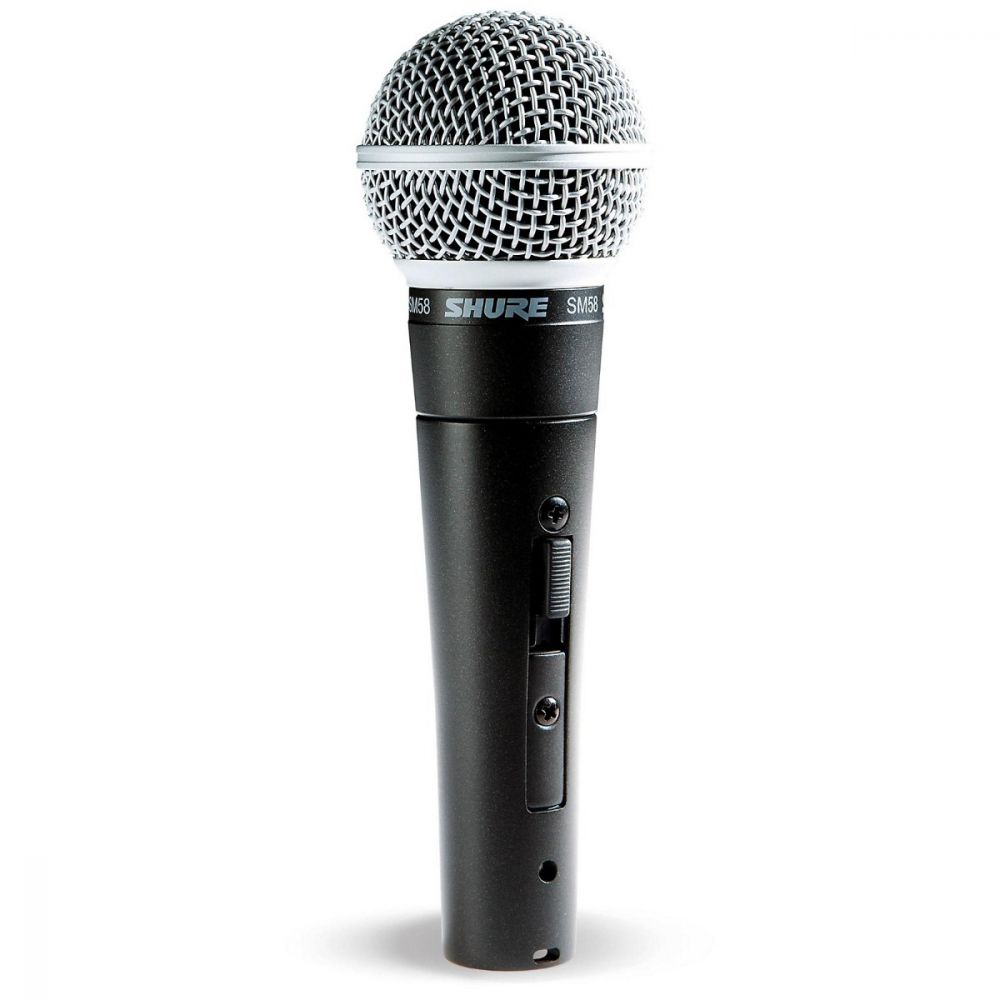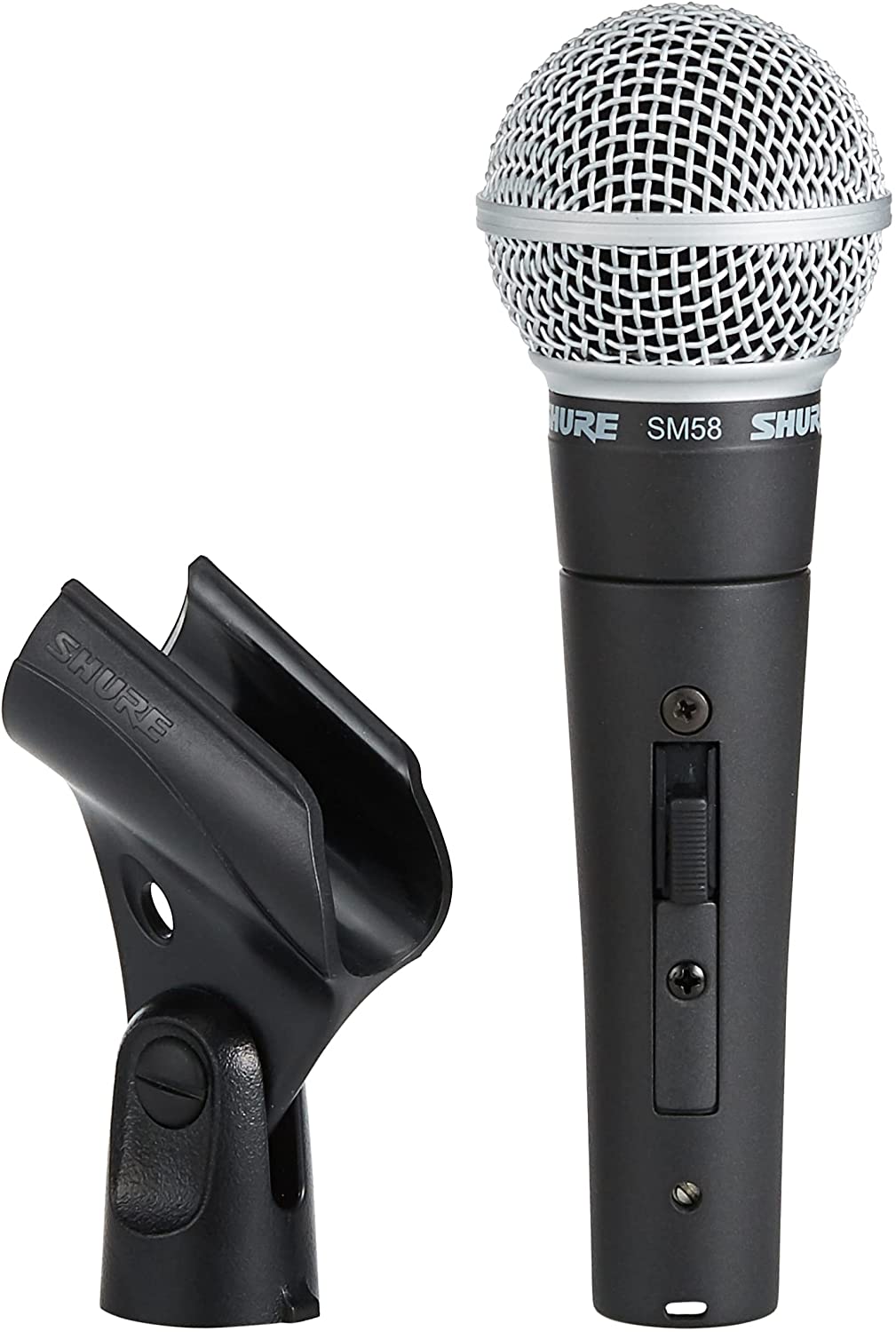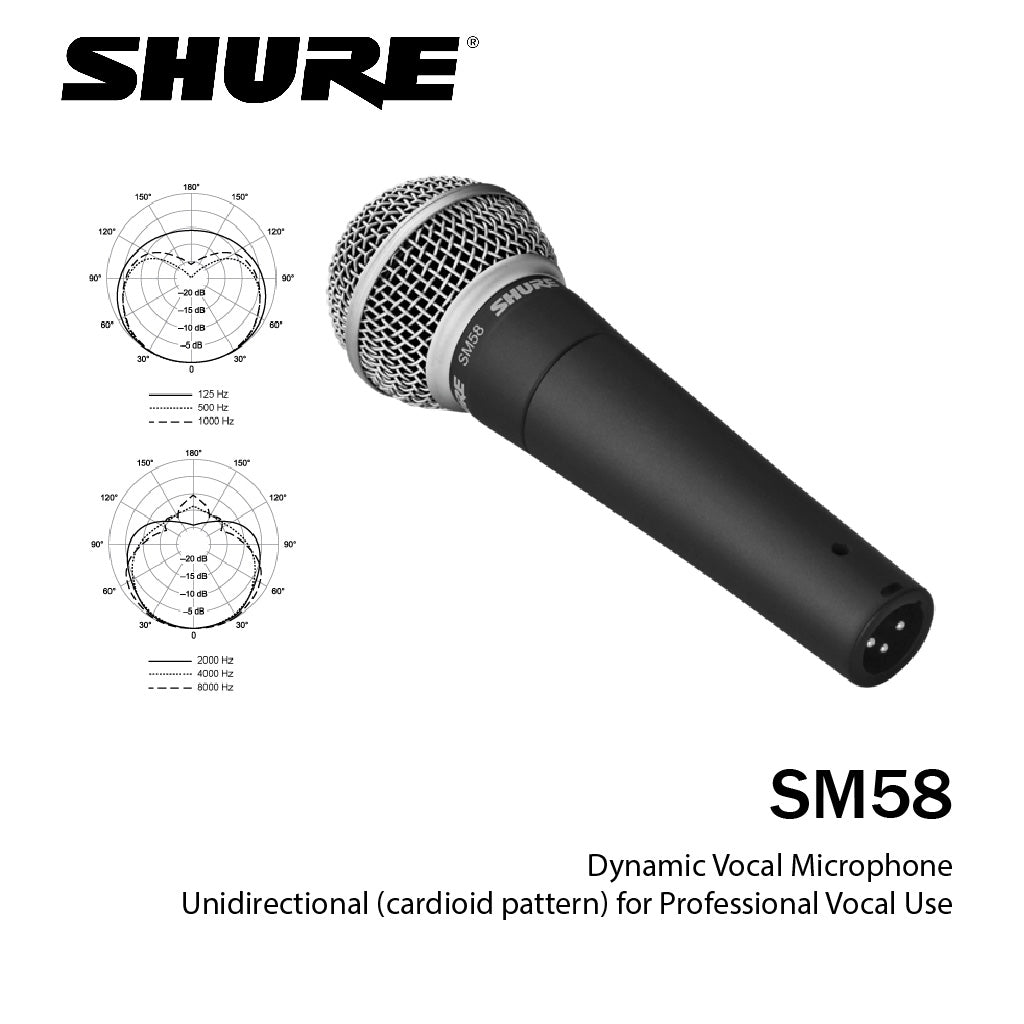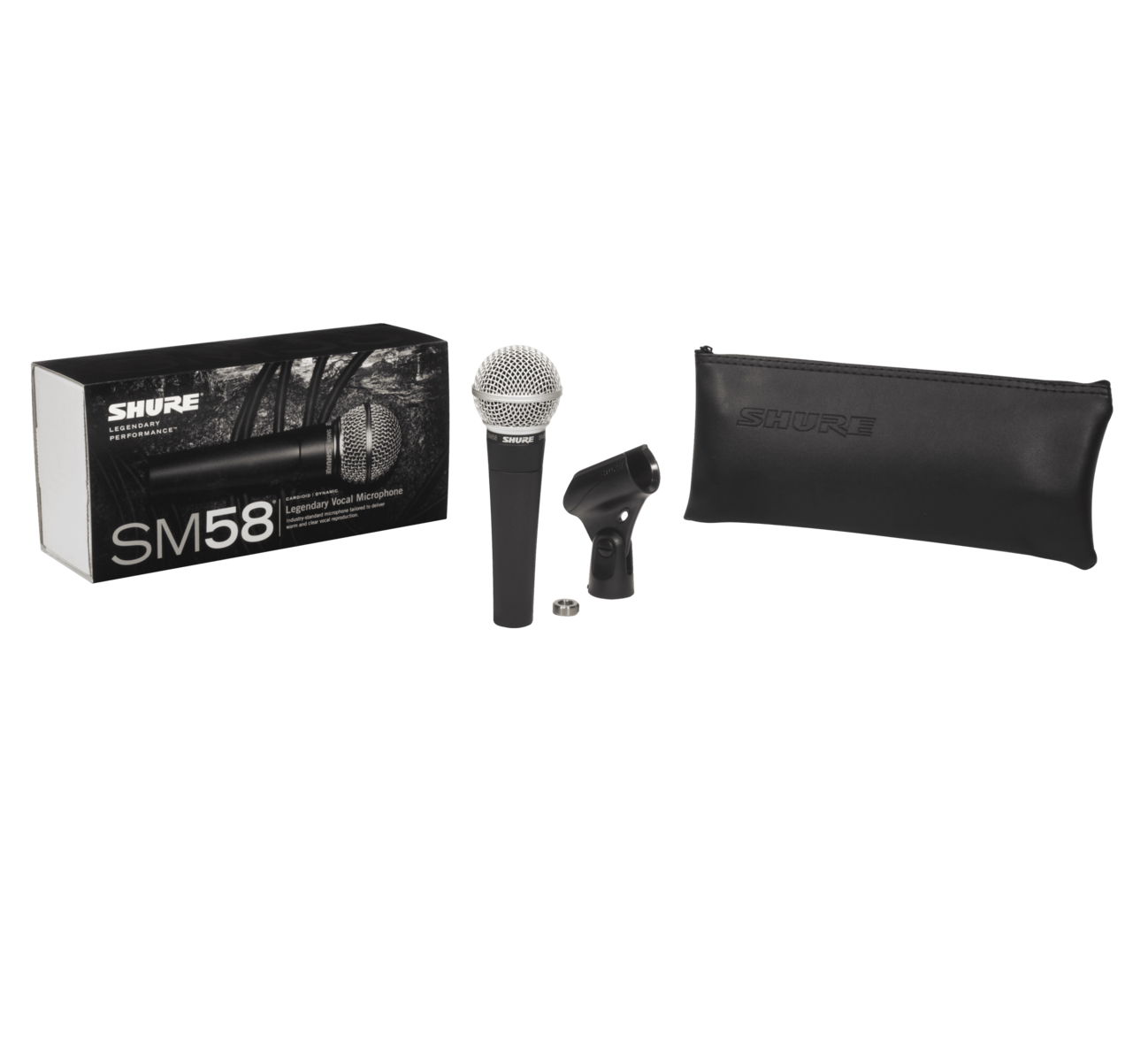Description
The SM58 is known as the world’s most popular performance microphone. It is an instantly recognizable icon for performance and can be seen in the hands of anyone from Pop Idols and Presidents, to Podcasters, Poets and MC’s It is also a very effective microphone for live streaming and podcasting. Simply connect the SM58 to either an MVi, an X2U, or your audio interface of choice, and you’ve got a very affordable and durable kit for your live stream.
General Description
The Shure SM58® is a unidirectional (cardioid) dynamic vocal microphone for professional vocal use in sound reinforcement and studio recording. A highly effective, built-in, spherical filter minimizes wind and breath “pop” noise. A cardioid pickup pattern isolates the main sound source while minimizing unwanted background noise. The SM58 has a tailored vocal response for a sound which is a world standard. Rugged construction, a proven shockmount system, and a steel-mesh grille ensure that even with rough handling, the SM58 will perform consistently. Outdoors or indoors, singing or speech, the SM58 is the overwhelming choice of professionals worldwide.
Features
- Performance tested, industry standard
- Uniform cardioid pick-up pattern for maximum gain before feedback and excellent rejection of off-axis sound
- Tailored frequency response specifically shaped for vocals, with brightened midrange and bass roll off to control proximity effect
- Advanced pneumatic shock mount system that minimizes transmission of mechanical noise and vibration
- Steel-mesh grille and enamel-coated metal construction resist wear and abuse
- Effective built in pop-filter reduces undesirable wind and breathe noise
- Furnished with zippered storage bag and break-resistant stand adapter
- On/Off switch (SM58S only)
- Extremely durable under the heaviest use
- Shure quality, ruggedness and reliability
Placement
General Rules for Use
- Aim the microphone toward the desired sound source (such as the talker, singer, or instrument) and away from unwanted sources.
- Place the microphone as close as practical to the desired sound source.
- Work close to the microphone for extra bass response.
- Use only one microphone to pick up a single sound source.
- Use the fewest number of microphones as practical.
- Keep the distance between microphones at least three times the distance from each microphone to its source.
- Place microphones as far as possible from reflective surfaces.
- Add a windscreen when using the microphone outdoors.
- Avoid excessive handling to minimize pickup of mechanical noise and vibration.
- Do not cover any part of the microphone grille with your hand, as this will adversely affect microphone performance.
Applications And Placement
The following table lists the most common applications and placement techniques. Keep in mind that microphone technique is largely a matter of personal taste; there is no one “correct” microphone position.
| Application | Suggested Microphone Placement | Tone Quality |
|---|---|---|
| Vocals | Lips less than 15 cm (6 in.) away or touching the windscreen, on axis to microphone. | Robust sound, emphasized bass, maximum isolation from other sources. |
| 15 to 60 cm (6 in. to 2 ft.) away from mouth, just above nose height. | Natural sound, reduced bass. | |
| 20 to 60 cm (8 in. to 2 ft.) away from mouth, slightly off to one side. | Natural sound, reduced bass and minimal “s” sounds. | |
| 90 cm to 1.8 m (3 to 6 ft.) away. | Thinner, distant sound; noticeable levels of ambient noise. |
Avoiding Pickup of Unwanted Sound Sources
Place the microphone so that unwanted sound sources, such as monitors and loudspeakers, are directly behind it. To minimize feedback and ensure optimum rejection of unwanted sound, always test microphone placement before a performance.

Recommended Loudspeaker Locations for Cardioid Microphones
Proximity Effect
Unidirectional (cardioid) microphones progressively boost bass frequencies by 6 to 10 dB below 100 Hz when the microphone is at a distance of about 6 mm (1/4 in.) from the sound source. This phenomenon, known as proximity effect, can be used to create a warmer, more powerful sound. To prevent explosive low frequency sound during close-up use, the bass response gradually rolls off. This provides greater control and helps the user take advantage of proximity effect.
Specifications
Type
Dynamic (moving coil)
Frequency Response
50 to 15,000 Hz
Polar Pattern
Cardioid
Output Impedance
300 Ω
Sensitivity
at 1 kHz, open circuit voltage
-56.0 dBV/Pa [1] (1.6 mV)
[1]1 Pa=94 dB SPL
Polarity
Positive pressure on diaphragm produces positive voltage on pin 2 with respect to pin 3
Net Weight
0.33 kg (0.72 lb)
Connector
Three-pin professional audio (XLR), male
Housing
Dark gray, enamel-painted, die cast metal; matte-finished, silver colored, spherical steel mesh grille

Wiring Diagram

Typical Frequency Response

Typical Polar Pattern

Overall Dimensions
Accessories
Furnished Accessories
| Microphone Clip for SM58, SM57, SM87A, BETA87A, BETA87C, PGA57, PGA58, PGA48, PGA81 | A25D |
| Carrying/Storage Bag | 95A2313 |







